From 10 to 12 May, 2024, ESEAP Conference 2024 was held in Kota Kinabalu, Malaysia. In the conference, Wikimedians from ESEAP region (East and South East Asia and Pacific) gathered and learned about Wikimedia Movement. In this article, I introduce my experiences on 10 May.

Breakfast
The biggest challenge for me has come: GETTING UP EARLY AND HAVING BREAKFAST. On this day, I managed to succeed. I enjoyed breakfast with my roommate Masaki Murakami, a member of Wikimedians of Japan User Group. We talked about Wikimedia movement in Japan and possibilities of collaboration with other open source communities.

SessionA: Opening Ceremony
After the breakfast, the opening ceremony started! Members of the organizing team introduced the value of this conference and three Wikimedians had great speeches: Taufik Rosman (Wikimedian of the Year 2023), Dody Ismoyo (President of Wikimedia Community User Group Malaysia), and Maryana Iskander (CEO of Wikimedia Foundation). After that, fabulous performances were given. You can know more about the details on Etherpad (https://etherpad.wikimedia.org/p/ESEAP2024-Session-A).
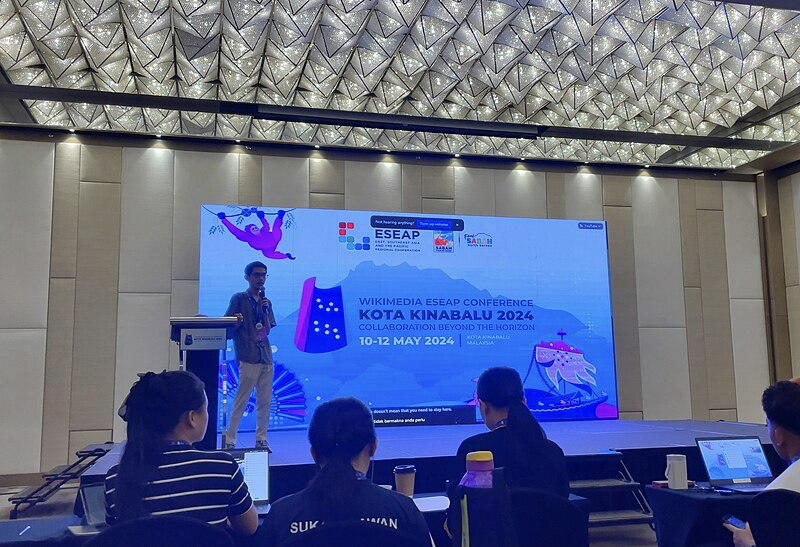
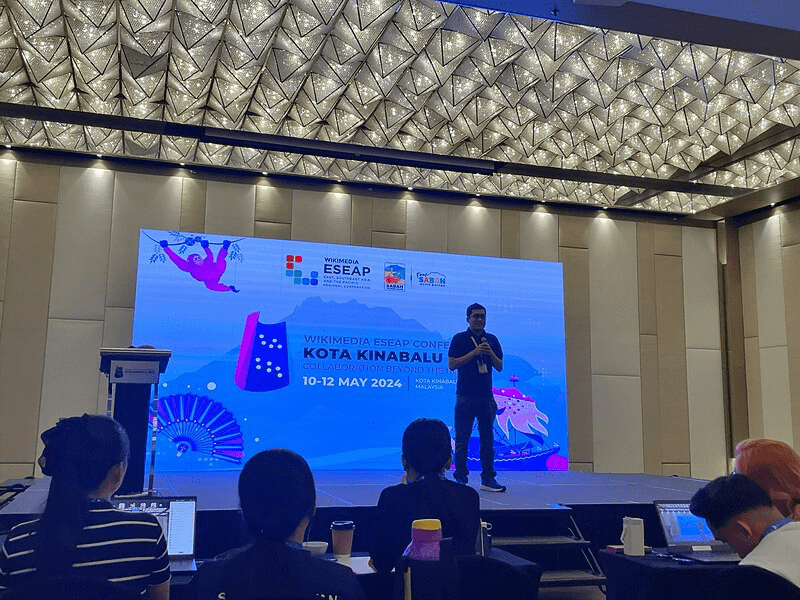

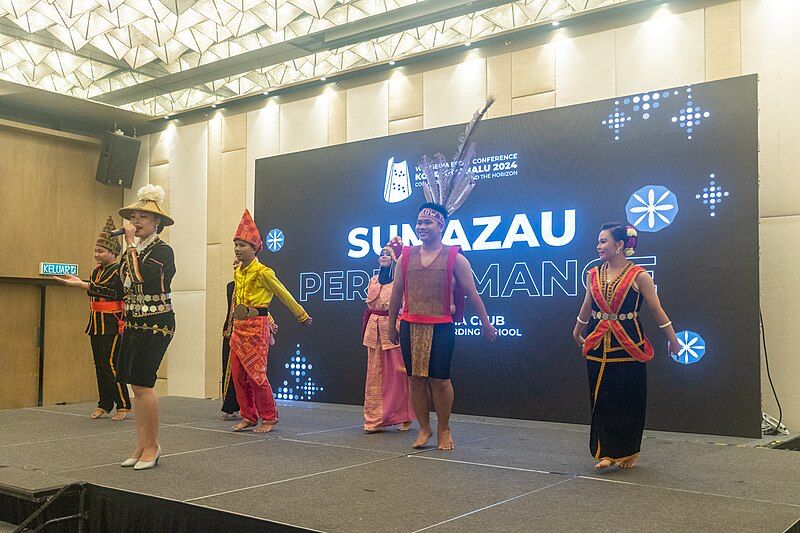
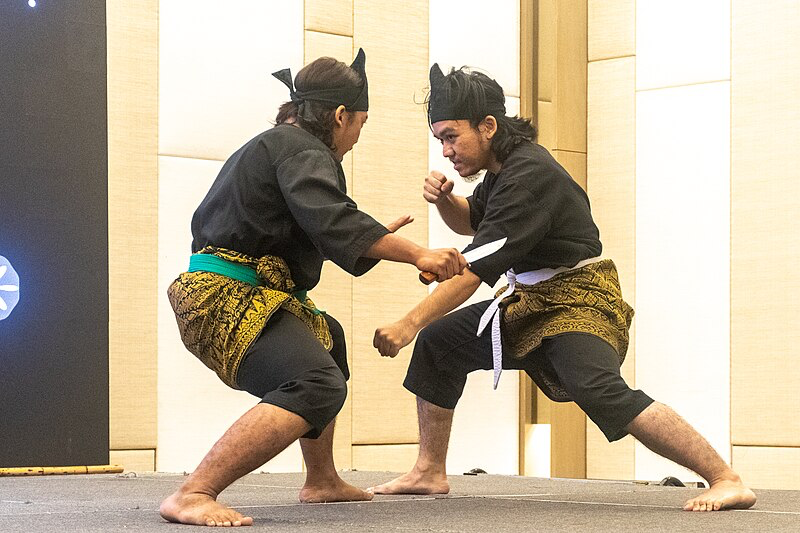
Session B: ESEAP Hub (1) – Introduction
In the next session titled “ESEAP Hub (1) – Introduction,” Belinda Spry and Dody Ismoyo from ESEAP Preparatory Council introduced the ongoing drafting process of the Movement Charter and ESEAP Hub Charter. Then, they explained that the mandate of the council will expire soon and suggested two options: extending the mandate for two months or calling an election for the council at ESEAP Conference 2024.

Actually, I cannot fully understand the explanation because I’m not very familiar with such charters and governance. I regretted not studying them more before the conference: as a scholarship recipient, I should do my best to make my participation productive. However, I also thought that if a brief summary on MetaWiki had been published in advance like other presentations, I would be less confused (because I had read all the summaries the day before the conference).

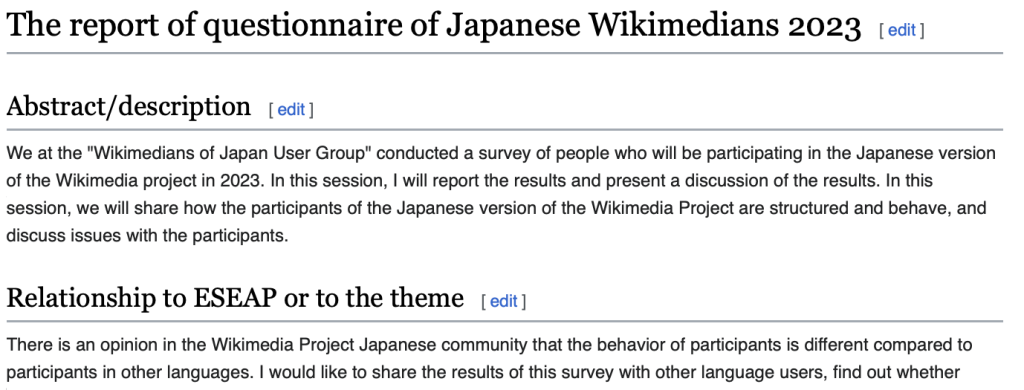

Let me confirm that I respect the members of ESEAP Preparatory Council and people who work hard to improve Wikimedia Movement. My comments above are just suggestions for the conference and not criticism for each person.
Session C
From Session C onwards, each session was divided into three parts and participants attended what they were interested in. On this session, I joined C3 session in Mahua 1 Room. The general summary of presentations at C3 is here (https://etherpad.wikimedia.org/p/ESEAP2024-Session-C3).
Can Oral Hokkien Language be Written? How Can Wikidata help?
On a presentation titled “Can Oral Hokkien Language be Written? How Can Wikidata help?,” I learned about the history of Hokkien language. User:Supaplex introduced that the language had been banned to use until 1993 and the nan Wikipedia needs manpower now. One of my reasons for attending the conference was to learn about examples of language preservation in Wikimedia projects. So this presentation motivated me a lot.
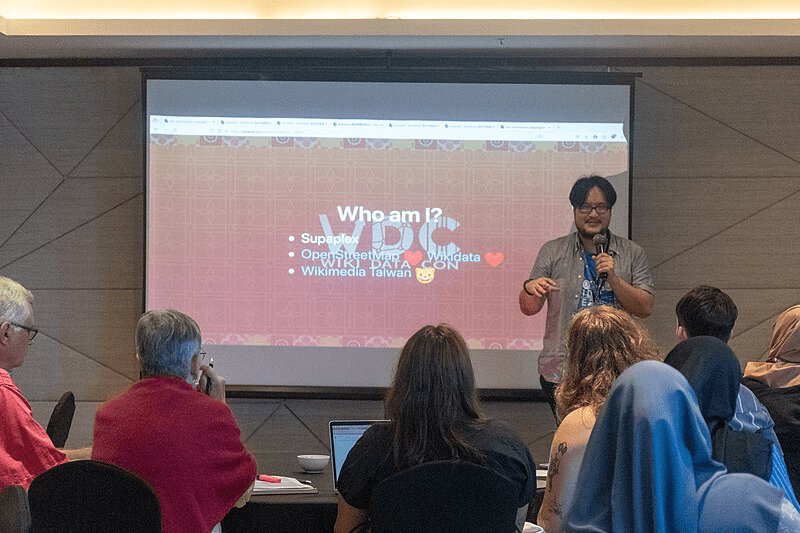
Wikidata Data Partnerships: Use Cases for the Region
On a presentation titled “Wikidata Data Partnerships: Use Cases for the Region,” Alan Ang from Wikimedia Deutschland featured some examples of the collaborations between Wikidata and organizations. Alan also mentioned one of my most favorite tools: Mix’n’match, which is a great media to combine Wikidata and catalogs.
In fact, it was not first time for me to meet Alan. I visited the Berlin office of Wikimedia Deutschland on March 2024 and had a conversation with him. On that day, he taught me Mix’n’match and I was so fascinated that I soon introduced it on Japanese Diff.
- Eugene Ormandy「Mix’n’match を活用して典拠ファイルとウィキデータを結びつける」『Diff』2024年4月24日。
- Eugene Ormandy (2 April 2024) “A Japanese Wikimedian in Wikimedia Deutschland office” Diff.
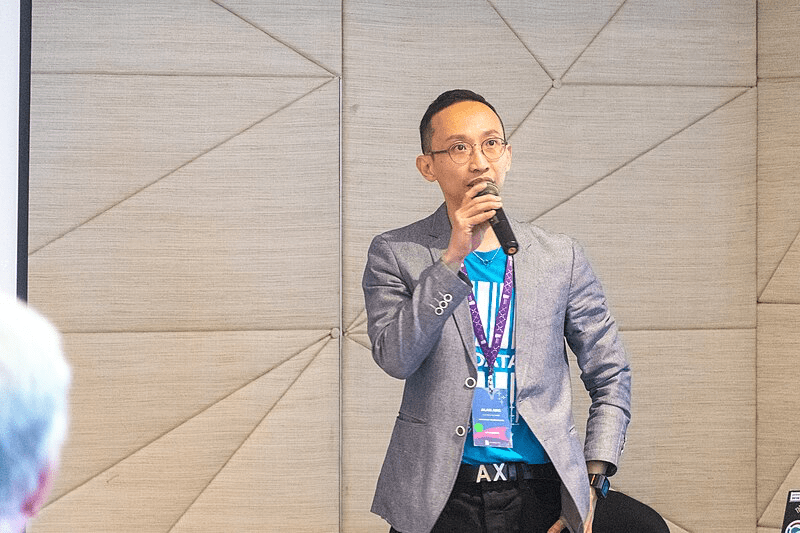
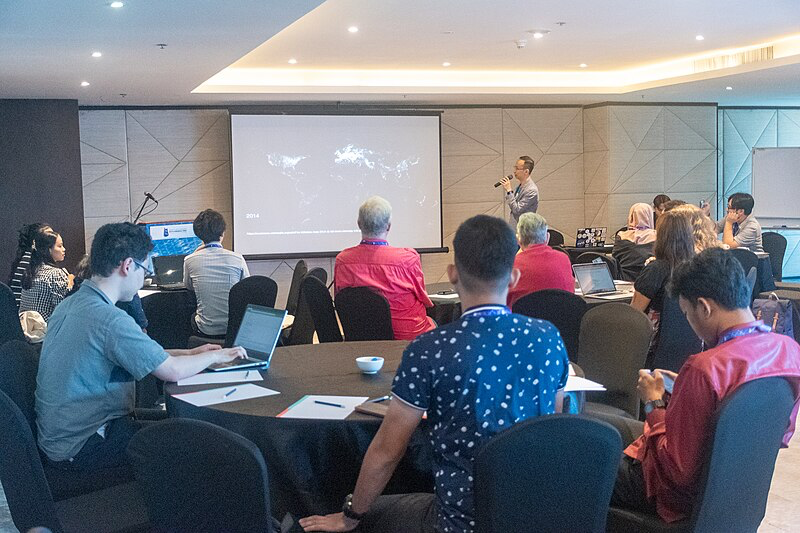
Lunch
After session C, I had lunch at the hotel with Wikimedians (it was the second time for me to meet some of them, after Wikimania 2023 in Singapore). We shared our interests and I was impressed by the diversity. Every interest is different and everyone can learn about something from other Wikimedians. I thought it would be one of the results of Collaboration beyond the horizon, the theme for ESEAP Conference 2024.
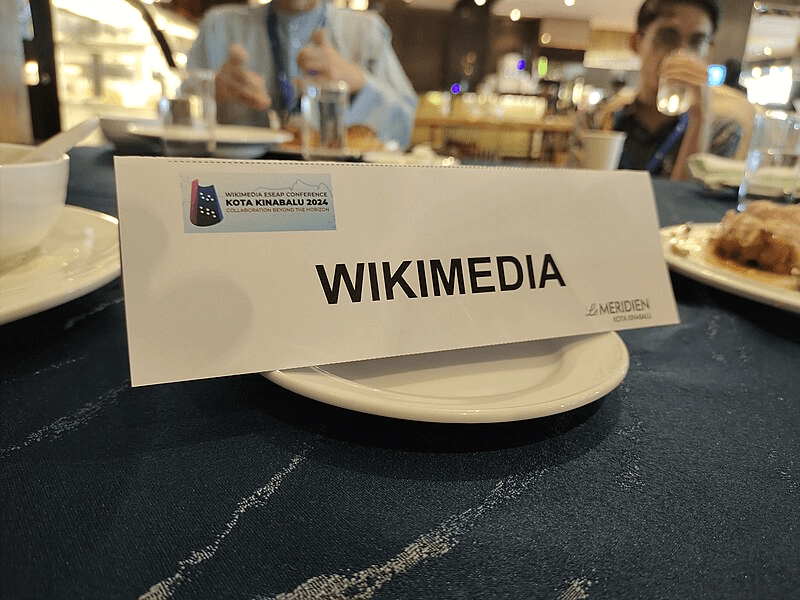
Session D
After the lunch, I participated in D3 session, which contains only one presentation titled “Harmonizing Voices with WikiTutur: Wiktionary and Lingua Libre Collaboration for Language Preservation.” It was amazing! In the presentation, Lingua Libre, a tool for enriching audio files on Wiktionary, was introduced and I understood that it will be helpful for language preservation on Wikimedia projects. However, as an user of Japanese language, which has relatively large number of speakers, I got concerned about dialects. For instance, my pronounciations and accents are influenced by two or three Japanese dialects and I cannot exactly understand whether my pronounciations are “right” or which dialects I use. So I avoided to edit Lingua Libre on that time and decided to study more after the conference. I predict that some Japanese “accent-dictionary” like the one below will help my study.
- 日本放送協会放送文化研究所, et al. NHK日本語発音アクセント新辞典. NHK出版, 2016. https://search.worldcat.org/ja/title/1006970788
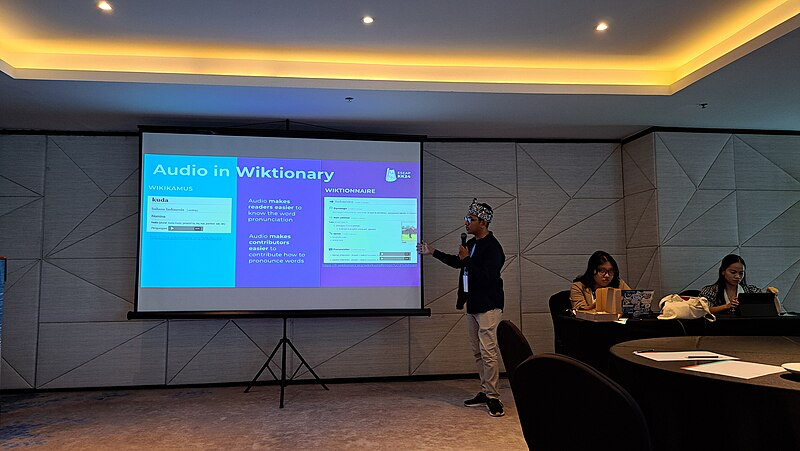
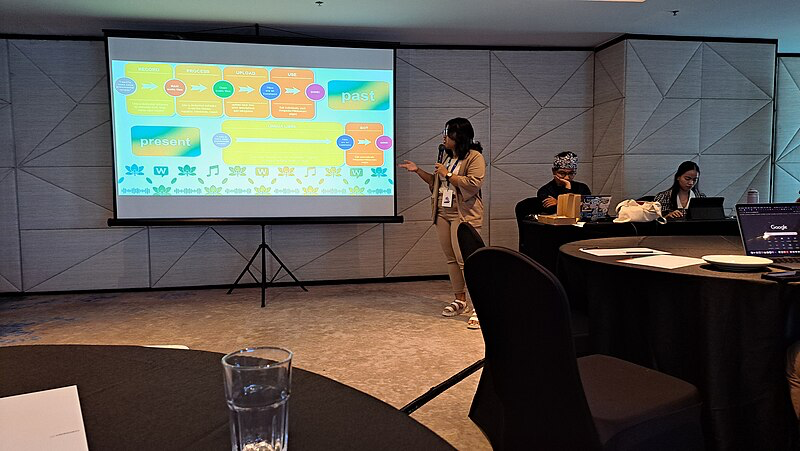
Break
After the session, we took a break. I chatted with Wikimedians and enjoyed souvenirs from them!
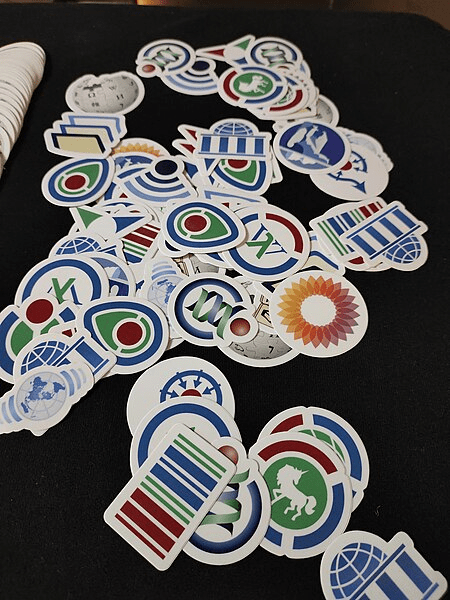
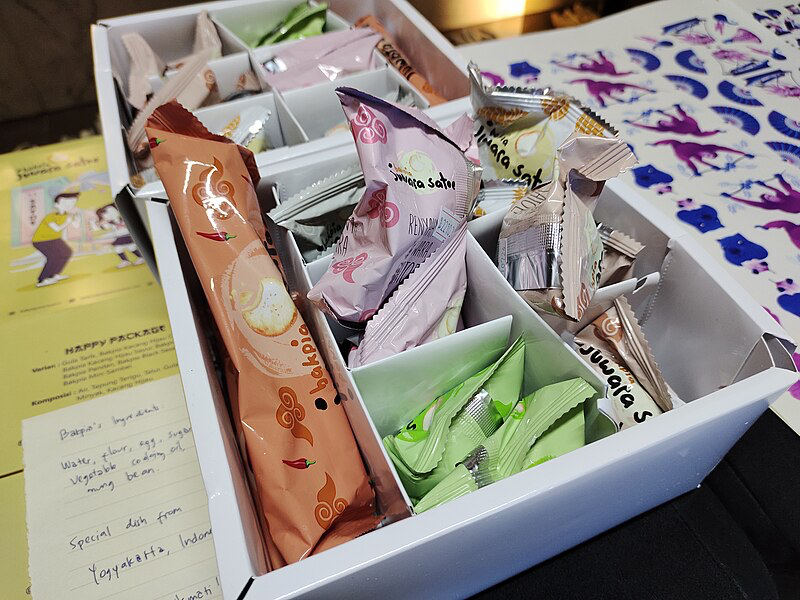
And we enjoyed cultural performance again.
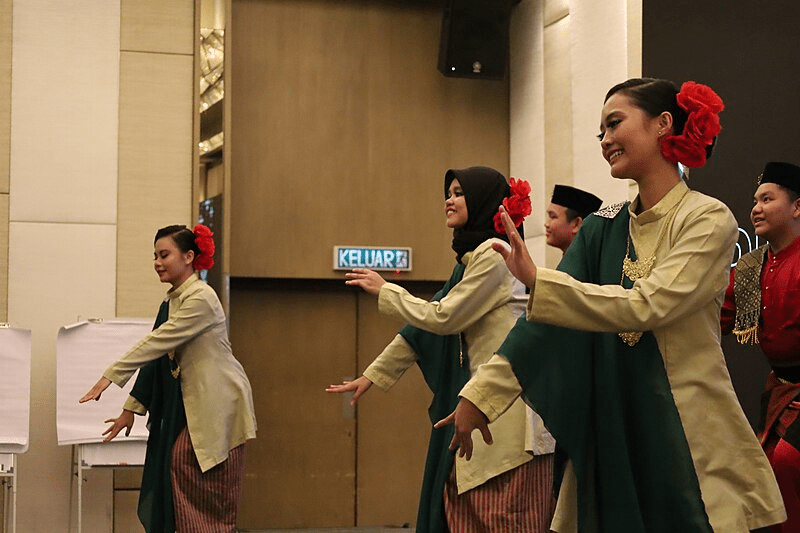
Session E
In Session E, Kent Wiki Club, the student club aiming to preserve Kadazandusun culture on Wikimedia projects, was featured. As I mentioned, I’m interested in such activities and I had sometimes collaborated with the club for Wikimedia Japan-Malaysia Friendship project (like a Wiktionary editathon).
Bridging IPGM Campus Kent’s Collaboration Network With the Community through Wikimedia
In the first presentation titled “Bridging IPGM Campus Kent’s Collaboration Network With the Community through Wikimedia,” Dr. Hamidah binti Samsudin, the director of IPGM Kent Campus introduced the club and the value of preservation. I felt that ot was really good that teachers were supportive of student Wikimedia club.
In fact, as the founder of the Student Wikipedian Community in Waseda University Tokyo, I was also supported by some researchers both inside and outside of the university like Dr. Sae Kitamura (User:さえぼー). I hope more and more teachers and researchers get interested in students’s Wikimedia activities and help them. Maybe the case of Kent Wiki Club is a good model for all the Wikimedians around the world.

Kent Wiki Club IPGM Campus Kent: Globalizing Kadazandusun Language and Culture via Wikimedia ESEAP
In the second presentation titled “Kent Wiki Club IPGM Campus Kent: Globalizing Kadazandusun Language and Culture via Wikimedia ESEAP,” two students from the club introduced their activities. What attracted me was that they spoke in their language: Kadazandusun language (with English-interpreter). As a Wiktionary editor, who sometimes edit Kadazandusun entries on Japanese Wiktionary, I was encouraged to learn more about the culture.
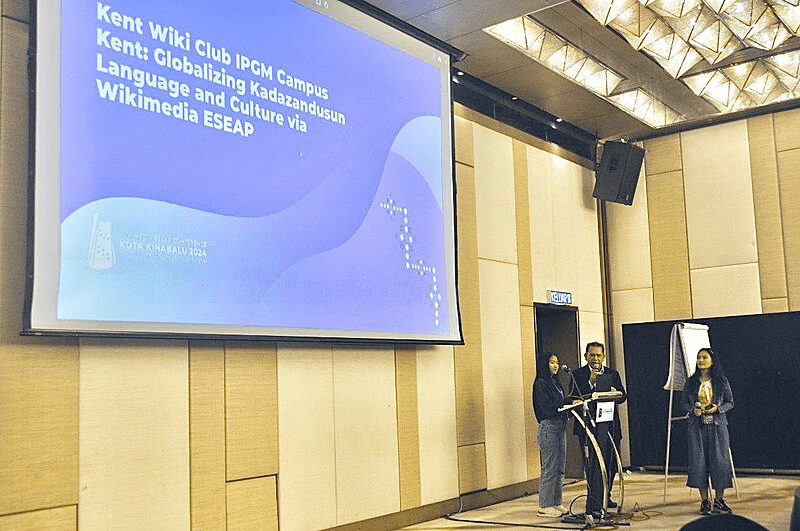
Wikimedia’s role in collaborating with IPGM Campus Kent to promote and preserve the Kadazandusun Language
In the last presentation titled “Wikimedia’s role in collaborating with IPGM Campus Kent to promote and preserve the Kadazandusun Language,” User:Linah66 wrapped up the presentations. After all the presentations, we took a group photo. I hope this session becomes an opportunity for various Wikimedians to get interested in language preservation on Wikimedia projects. I’m looking forward to collaborating with the club more.
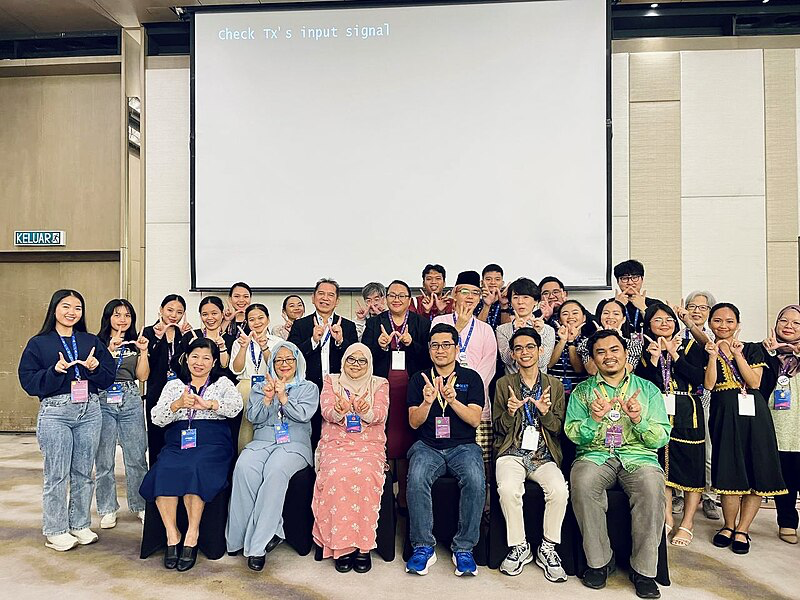
Cultural Village Trip
After all the presentations, Wikimedians enjoyed the cultural village trip.
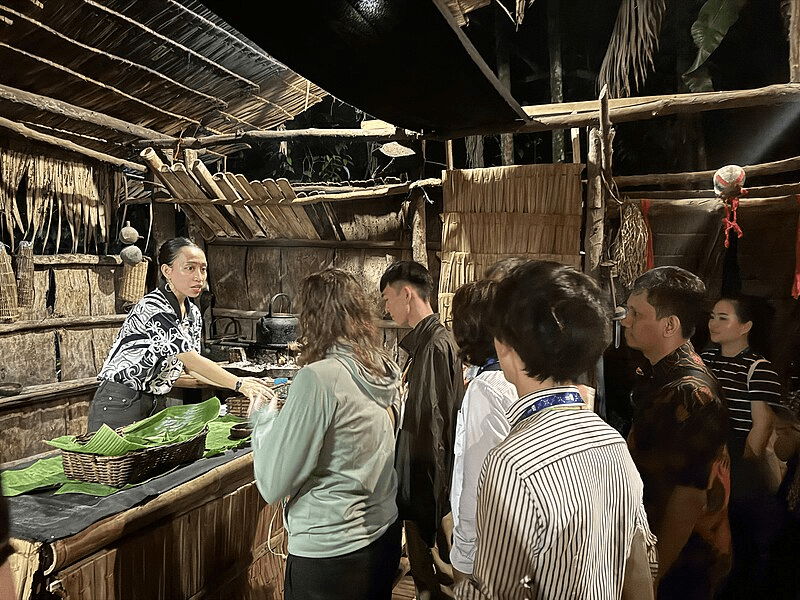
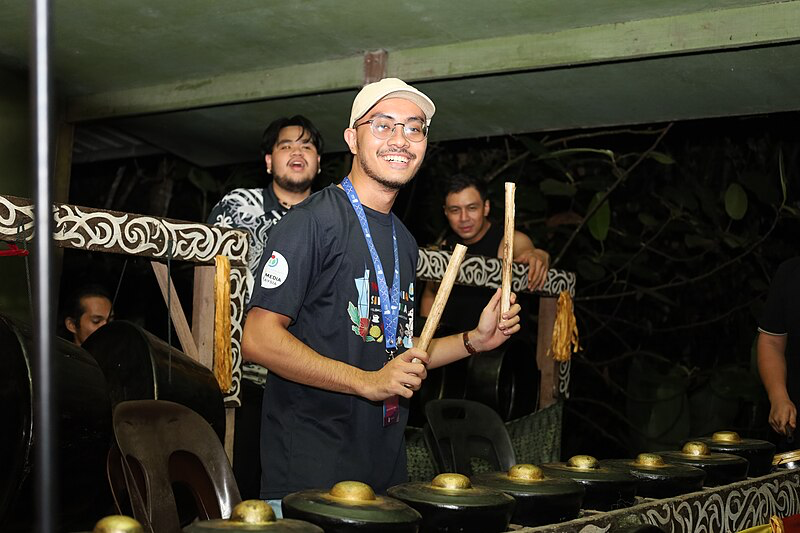
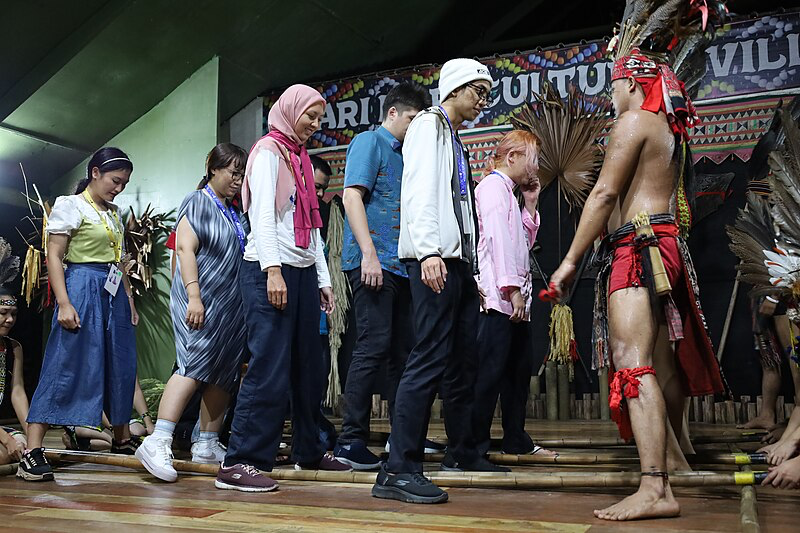
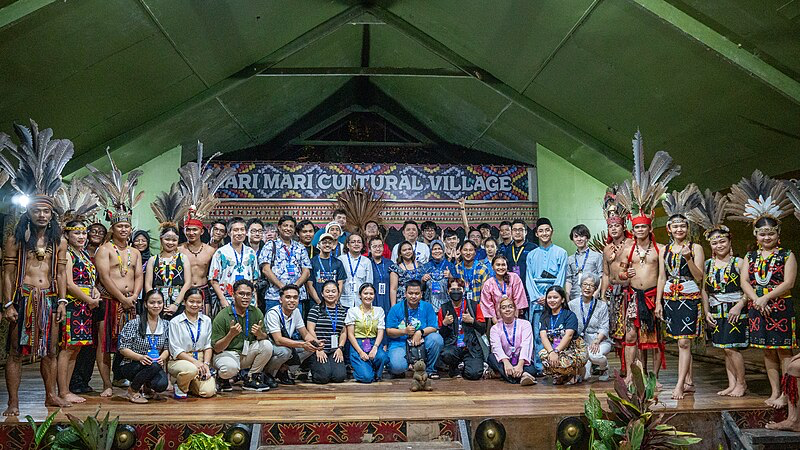

Can you help us translate this article?
In order for this article to reach as many people as possible we would like your help. Can you translate this article to get the message out?
Start translation